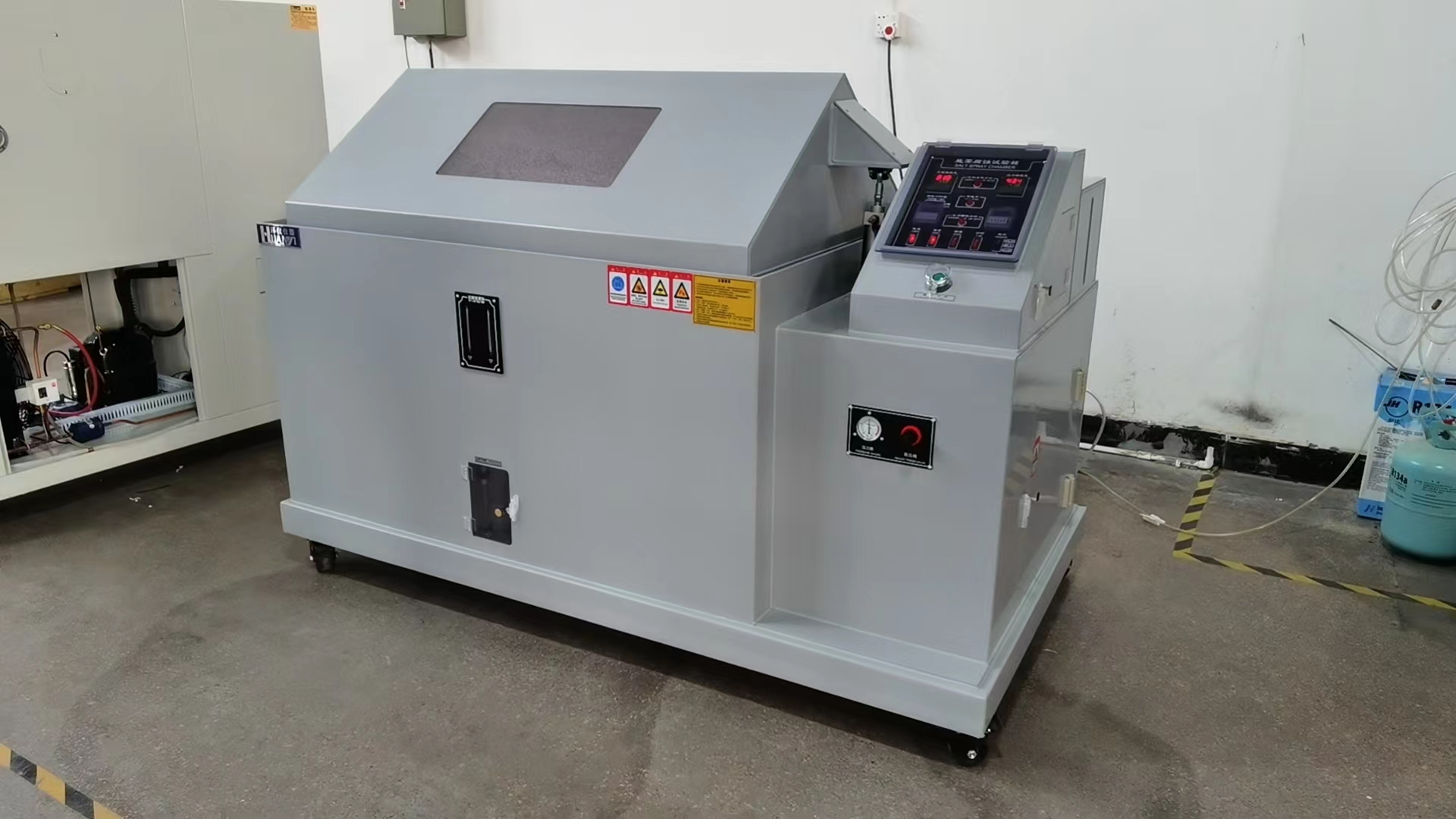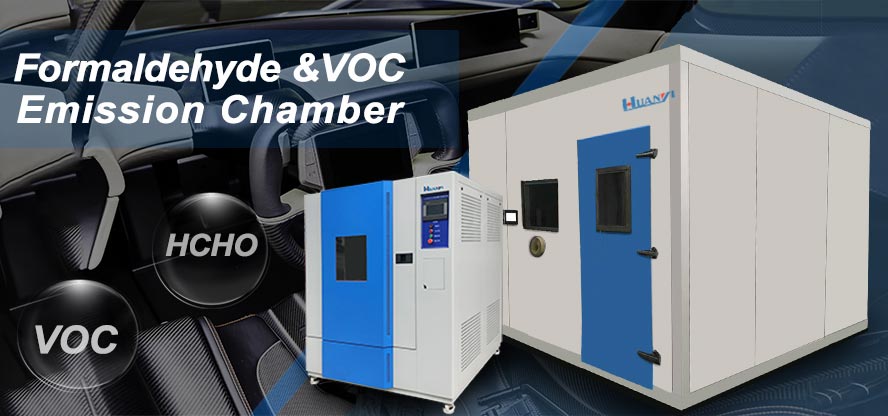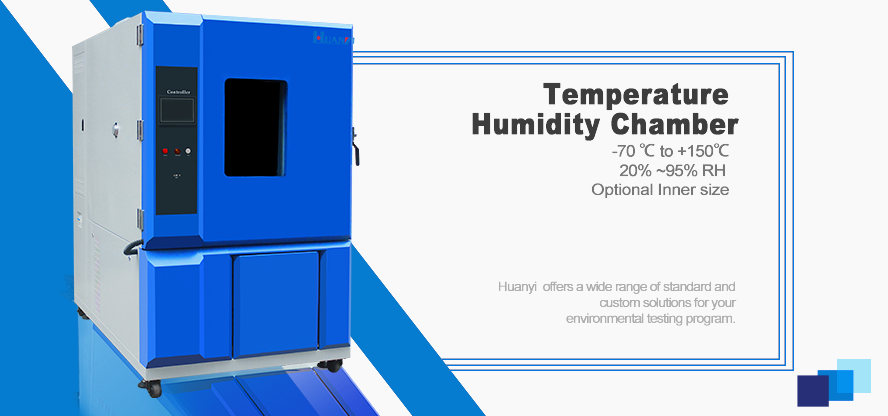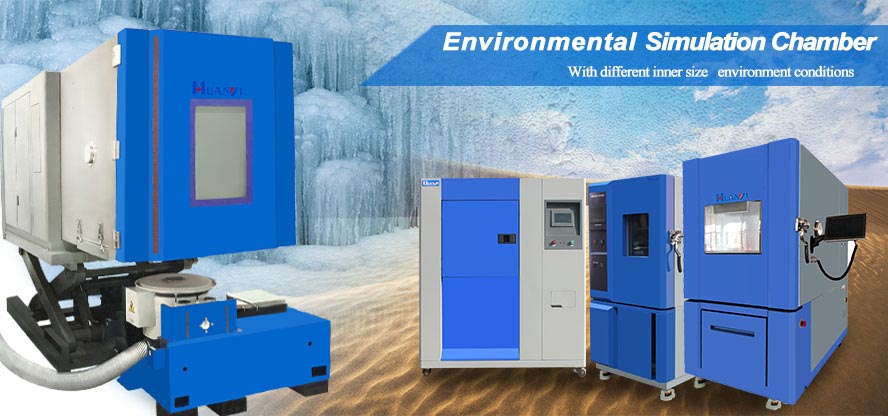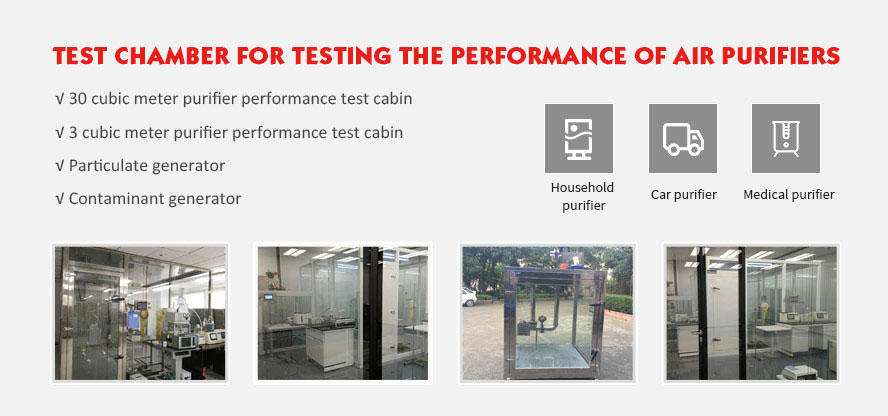Salt spray corrosion test standards
The salt spray corrosion test can simulate salt spray corrosion in the atmospheric environment and speed up the entire corrosion progress. The test results can be obtained in a short time. It plays an important role in the automotive industry and can test the reliability and quality of products. The first type of salt spray test that appeared was the neutral salt spray test. The corrosion environment is close to neutral. On this basis, various tests appeared, such as ASS, CASS, etc. Later, the alternating salt spray test was developed, which can cycle heat and humidity. , salt spray and drying stages, realizing the alternate conversion of various environments, and can effectively test product performance. At this stage, a variety of salt spray corrosion test standard methods have emerged, which are suitable for testing different automotive parts.
1 Salt spray test
1.1 Salt spray corrosion
Salt spray is a common atmospheric corrosion. It exists in the natural environment and the corrosion is relatively destructive. Salt spray contains a large amount of chloride ions, which will directly penetrate the surface of metal materials. Neither the oxidation nor the protective layer can block the chloride ions. After passing through the surface of the material, an electrochemical reaction will occur with the metal, causing huge damage to the material. Surface corrosion will also change the original performance. After long-term corrosion, it will be put into the interior of the product through gaps and cracks, causing further corrosion.
1.2 Salt spray test
Salt spray corrosion causes great damage to metal materials. In order to reduce salt spray corrosion, a salt spray test can be carried out to simulate the state of atmospheric salt spray corrosion in the laboratory. Compared with the natural environment, the salt spray corrosion simulated in the laboratory is more intense. , the chloride concentration can reach several to dozens of times that of the atmospheric environment, which can quickly show the corrosion of metal materials in the laboratory. The corrosion situation in the natural environment for one year can be simulated in 24 hours in the laboratory. This can greatly shorten the experimental time, and the simulation experimental results are more accurate. During the salt spray test, a large number of professional simulation equipment will be equipped in the laboratory. Monitoring salt spray environmental conditions is a type of environmental test.
2 Types of salt spray tests
2.1 Neutral salt spray test
At this stage, the most commonly used test method is the neutral salt spray test, which is also the earliest test method. During the neutral salt spray test, salt spray must be continuously provided, the temperature is around 35°C, and the humidity is above 95%. Use sodium chloride brine (5% concentration) to make 1 ~ 2mL/(h·80 cm2) Settling amount, the salt spray is deposited on the surface of the object to be tested, and then the test time is determined according to actual needs to determine the corrosion situation [1].
2.2 Acetate salt spray test
On the basis of the neutral salt spray test, the acetate salt spray test was developed. The test conditions are basically the same as the neutral salt spray test, but a certain amount of glacial acetic acid must be added to adjust the pH value and quickly The pH of the laboratory is adjusted to acidic (the pH value is about 3), so that the nature of the salt spray changes. The object under test is in an acidic salt spray environment, and the corrosion rate accelerates, which can reach 3 times the speed of the neutral salt spray test.
2.3 Copper accelerated acetate salt spray test
In recent years, my country's economy has developed rapidly, which has also driven industrial development. The corrosion rate of salt spray tests also needs to be accelerated. Therefore, more product tests adopt copper-accelerated acetate salt spray tests and increase the test temperature to 50°C. In the original Adding a small amount of copper chloride to the sodium chloride solution can greatly increase the degree of corrosion. At the same time, the pH value is generally set at 3.1 to 3.3. The corrosion degree exceeds the acetate salt spray test, and the corrosion rate can reach about 8 times that of the neutral salt spray test
2.4 Alternating salt spray test
The alternating salt spray test is a comprehensive test. Different test conditions are comprehensively used and combined and circulated in the laboratory. This can make the simulation environment closer to real life. The tested components are in a moist environment, which not only corrodes the surface, but also causes damage to the product. Certain corrosion occurs internally. During the alternating salt spray test, two environments will be alternately switched, one is a salt spray environment, and the other is a humid and hot environment. After the simulation test is completed, the electrical and mechanical properties can be detected. Mainly used for testing cavity type complete machine products[2].
3 Characteristics of cyclic corrosion salt spray test
3.1 Acceleration
The acceleration of cyclic corrosion salt spray test is mainly reflected in three aspects.
1) Continuous spraying of salt spray ensures continued surface corrosion. During the cyclic salt spray corrosion process, a certain amount of salt spray will be sprayed out, and the parts under test will undergo a series of changes, including rust, bubbles, etc. The salt spray is continuously supplied during this process and can continue to corrode the parts under test. .
2) The accumulation of salt spray during the hot and humid stage will spread to the inside of the component being tested. After the part under test enters the hot and humid stage, although no salt spray is sprayed on the surface, the accumulated salt spray will still adhere to the surface of the object under test, penetrate into the interior in the hot and humid environment, and deeply corrode the part under test.
3) The drying stage accelerates the surface corrosion rate. After the parts under test enter the drying stage, the relative humidity will gradually decrease, which increases the concentration of the salt solution, which is more corrosive and accelerates the corrosion of the parts under test.
During the cyclic corrosion salt spray test, the tested part is always in a state of alternating cycles. The traditional salt spray test method is too simple. Serious corrosion only occurs on the surface of the tested part. Although it will penetrate into the interior, the corrosion simulation will deviate from the actual situation. The cyclic alternating corrosion cycle alternates the three states of dryness, damp heat and salt spray. The simulated environment is closer to reality, speeding up the test, and making the test results more accurate and real.
3.2 Complexity
The environment simulated by the cyclic salt spray experiment is closer to the atmospheric environment, and there are many cyclic components. It can be reasonably selected based on actual test needs to be as close to the use environment as possible, and the complexity of the test is higher. Since cyclic salt spray corrosion requires switching between multiple cycle combinations, special operators need to be arranged for this. In recent years, with the continuous improvement of scientific and technological levels, a single test chamber can be used to complete all test tasks. However, currently domestic test chambers cannot Support all trials, some imported products can be completed.
4 Standard method for circulating salt spray for automotive materials
The cyclic salt spray test was first used in the automotive industry and can effectively evaluate the reliability of products. There are three main cyclic salt spray standard methods:
4.1 CCT cycle
This method is mainly based on the neutral salt spray method, adding two links: drying and moist heat. After many subsequent optimizations and improvements, it has developed to CCT IV. It is also a method currently recognized by the industry and is mainly used to test automotive steel plates and parts. part. The moist heat condition is 60°C and 95%, lasting for 75 minutes, and the drying temperature and humidity is 60°C and 30%, lasting for 160 minutes, and it goes through the damp heat stage again [3].
4.2 GMW 14872
This method was first applied in the United States. It adopts a combination of superimposed environments. The ambient temperature is 25°C and 45% relative humidity. After 8 hours, it enters the hot and humid stage, and then enters the drying stage. This method can add salt spray according to the actual environment, and can also Adding factors such as mechanical impact and grit, the number of cycles can be selected in conjunction with automotive test components when using this method.
4.3 SAE J2334
This method is an internationally published standard method. The temperature is 25 ℃ and the relative humidity is 45%. It lasts for 8 hours and enters the hot and humid stage. The temperature is raised to 50 ℃ and the humidity reaches 100%. It lasts for 6 hours and enters the salt spray stage. Finally, Drying stage. This method takes a long time to dry and is generally used to test automotive coating products.
4.4 PV 1210
This method is mainly used in Germany and is relatively widely used. It is exposed to salt spray, humid heat and storage environment. It first maintains the neutral salt spray state, continues for 4 hours and then enters the ambient temperature. Finally, it enters the humid and heat stage. This method cancels the drying stage and uses For testing coated car bodies, sheets and structural components.
5. Single and comprehensive salt spray and corrosion tests in the automotive industry
As the level of science and technology improves, people have higher requirements for the quality of automobile products. No matter in the design, research and development and other stages, the rational use of inspection methods must be strengthened. While the design stage pays attention to product functions, it also needs to pay attention to the service life. However, product performance cannot be observed in a short time in daily environment and requires a longer observation time, which requires the use of salt spray corrosion test. Especially since automotive products are exposed to the air most of the time, salt spray corrosion is inevitable [4].
5.1 Single test
At this stage, my country's automobile industry mainly uses single tests, among which the more critical test items include condensation test, salt spray test, etc. Although the condensation experiment is simple to operate, the accuracy of the results cannot be guaranteed. The actual results are closely related to the test sequence. Under the two conditions of long-term humidity and condensation water evaporation, completely different experimental results will be obtained. The salt spray test will change the corrosion type according to the automobile parts, so there is a serious problem in a single test. Although similar test pieces can be repeated in large numbers, The purpose of compensation is achieved, but the correlation between the laboratory simulation environment and the atmospheric environment cannot be guaranteed. At the very beginning, a German business association began to study salt spray tests. The main research direction was the correlation between the test environment and the atmospheric environment. At the same time, a series of standards were formulated based on the results of the research. For example, when testing the car paint process, it is necessary to choose a method that can simulate the corrosion state during the driving of the car, focusing on observing the joints, edges and other locations.
Existing studies have shown that the laboratory salt spray test results meet the test requirements and speed up the progress of test simulation. When tested according to test standards, the time can be greatly shortened. For example, testing automobile parts in an atmospheric environment takes 4 to 6 weeks, but The salt spray test can be completed in 4 to 6 cycles. Even if the component has a multi-layer structure, the corrosion process of the component can be well simulated, and a single cycle can achieve the effect of atmospheric environment testing for 3 weeks. If you test the igniter in the body cavity, this cycle is equivalent to the effect of 2 weeks of testing in the atmospheric environment. Although the single test effect is relatively good, it still cannot meet all the testing requirements of automobile components. Therefore, comprehensive tests, alternating tests, etc. have appeared .
5.2 Comprehensive test
The comprehensive test is developed on the basis of a single test and adds many different simulated environments, mainly salt spray stage, drying stage and moist heat stage. Different combined stages can be cycled alternately, which can make the laboratory environment closer to reality. , and at the same time, it can also achieve the purpose of speeding up the test. At this stage, a large number of standard cyclic salt spray standard methods for automotive materials have appeared in the world, such as CCT cycle, GMW 14872, SAE J2334, PV 1210, etc., which can be selected according to actual needs. After determining the cycle test method, attention should also be paid to taking into account the testing requirements of automobile components and determining a scientific test combination to achieve the expected test results.
5.3 Difficulties and solutions in test methods
During the salt spray test, some difficult problems are often encountered, mainly including the following two aspects.
5.3.1 Temperature and climate control issues in alternating tests
In order to be closer to the real environment, the salt spray test can also add climate factors, which requires the equipment control system to have corresponding functions. Foreign products basically adopt a modular structure and are equipped with a direct temperature control system. This system has superior performance in all aspects , the auxiliary heat exchange medium buffer can be used during circulation to keep the test chamber stable and the temperature and humidity will not change drastically, thus ensuring the stability of the test. In addition, direct temperature control systems have many advantages. They can also continue testing in a state close to humidity saturation.
5.3.2 Constant spray
During the salt spray test, a constant spray is also used that helps the salt spray test reproduce environmental conditions. However, the existing methods cannot directly solve the problem of constant spray, such as air conditioning, salt water supply source, etc. This is mainly because the salt water is supplied by the nozzle atomization, and the key to maintaining a constant spray volume during operation is to examine the vacuum degree, liquid Level, etc. For this reason, in order to truly simulate the atmospheric environment and ensure the accuracy of salt spray corrosion results, it is necessary to strengthen the research and development of high-tech products in order to provide more product technical support for salt spray tests.
Conclusion: The salt spray corrosion test can test the multi-faceted performance of automobile parts, truly restore the atmospheric salt spray corrosion environment, and is widely used in automobile testing work. At this stage, the cyclic corrosion salt spray test is mainly used, which can alternately convert different corrosion environments and improve the accuracy of the test. During the salt spray corrosion process, the test method must be selected in conjunction with automotive components to achieve twice the result with half the effort. At the same time, attention must be paid to the introduction of Advanced testing equipment can make test results more real and effective.
